Featured Articles
Art of Boxing Series: Paulie Ayala
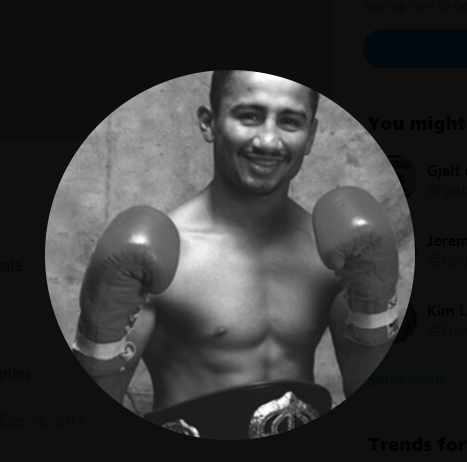
Few could battle in the pocket like Paulie Ayala the Texan from “Cow Town” U.S.A. His pit bull mentality and ability to apply pressure to the best prizefighters in his weight class launched him to recognition as the Fighter of the Year in 1999.
Ayala also participated in the Fight of the Year in 1999.
Though Ayala only fought 12 years professionally he engaged in many pivotal and exciting battles against the best bantamweights and featherweights in the world. Despite only 12 knockouts in 38 prize fights, his ability to catch and hit kept the bigger sluggers off balance.
“I went in there and took their wills,” said Ayala.
The rugged fighting Texan was literally brought up with boxing gloves as an infant but was a reluctant fighter as he grew older. Early on he understood the discipline needed to succeed in a sport that has no pity.
“I started doing exhibitions when I was about four years old. My dad’s cousin Paul Reyes had a boxing club called UAW. On that club he had Bruce Curry, Donald Curry, he had a bunch of good fighters,” said Ayala about the Union of Auto Workers Gym in Fort Worth, Texas. “My brother would box and I was too young so they had me do exhibitions there. That’s basically how I got started into boxing.”
Because of the Curry brothers, Bruce and Donald, the gym gained early notoriety as a place for champions, especially when the American boycott of the Moscow Olympics in 1980 forced them to become professionals earlier than anticipated.
“Paul (Reyes) started training Donald Curry,” said Ayala.
The UAW Gym was loaded with talent and it was Ayala’s introduction to prizefighting. And later in the 1980s another gym popped up and that was loaded too.
“In the mid-80s David Gorman had a big stable of fighters. There were four world champions, Robin Blake was ranked, Donald Curry was ranked and was world champion. Stevie Cruz was champion when he beat Barry McGuigan. Troy Dorsey beat Manuel Medina and he was champion. Gene Hatcher beat Ubaldo Sacco (WBA super lightweight world title in December 1984) during that time. And I was in the gym with the amateur team and I got to train with all of them guys. I got to see a lot of stuff. It was pretty stacked,” said Ayala who was a young amateur during that time.
As he grew older he often sparred with the pros especially when they were getting ready for big fights. Looking back at his amateur period Ayala realized that his style was not suited for the quick pace of amateur boxing.
“I was so slow, I started slow. It was hard to adapt in the amateurs because it was so fast. So now when I look back I realize I didn’t have a lot of lateral movement. I didn’t have a lot of head movement. But I was good at catching punches and countering. And I threw a lot of punches,” said Ayala of his amateur career. “That’s how I was able to beat a lot of guys who were really slick boxers and had good movement. I was always able to wear them down in those three rounds. That’s how I knew if I had more than three rounds I could definitely do better as a pro.”
Still, Ayala found success as an amateur despite flaunting a slower pro style of defense and attack.
“I fought Sharmba Mitchell in the Junior Olympics. I fought David Santos he was out of Florida. I fought Frank Toledo in the Junior Olympics. I fought Eddie Cook. I fought some pretty top guys,” remembers Ayala. “When it came to nationals it was either Texas or California. To me, a lot of the pressure fighters come out of Texas. Not too many that move well on their feet. Not as much as the east coast.”
As an amateur in the talent-laden area of Fort Worth, the Texas southpaw found himself often sparring rock-hard professionals. And was indecisive on whether to pursue success as an amateur or become a professional.
“When I graduated from high school, I was kind of burnt out a little bit but I was also enjoying my senior year in high school. I was uncertain of looking at the boxing aspect of going pro. I said ‘I don’t know if I want to go pro, am I ready for that?’ remembers Ayala. “When I was 16, I was already sparring Troy Dorsey and Steve Cruz when they were getting ready for fights. I was coming on a weekend to spar with them on a Saturday. I learned a lot real fast. And I learned how serious the game is for the pros. I didn’t know if I was that committed. I was young and I behaved like a young guy.”
Despite the indecisiveness Ayala was successful as an amateur.
“I kind of was just playing around with boxing in 88 and 89. After 89 I made it to the nationals in Golden Gloves and I really never trained 100 percent but I was able to compete at a pretty good level. So whenever I came back and I lost to the champions, I was not really impressed with the guys that beat me,” said Ayala realizing that he lost because of subpar preparation. “It’s not like they beat me. They didn’t really beat me, they won. So I just stepped away from boxing and decided to go to community college because I was not 100 percent serious.”
For a year and a half Ayala stayed away from boxing.
“Life Goes by Pretty Fast”
But in 1991, a former foe he had faced became a world champion and that opened Ayala’s eyes to the opportunities he might be missing.
“In 1991 I saw Eddie Cook win the world title and he was one of the last guys I fought. And I was like, that’s awesome, I’m happy for him,” said Ayala. “I was coming to the realization that life goes by pretty fast and I just didn’t want to look back and not give it a shot and be uncertain on whether I was able to be a champion.”
Ayala returned to the competitive amateur boxing world and decided to compete for a spot on the US Olympic team headed for Barcelona in 1992.
“So around July of 91 I decided to try and qualify for the 92 Olympics. In six months I made it to the US championship and I lost to a guy in the finals named John Fletcher of the Navy. But what that did was qualify me to be on the US Team. So, they sent me to Russia. And it qualified me for the Olympic trials and I fought the Golden Gloves national champion and I stopped him. Then I fought Fletcher and I beat him. Then I fought Sergio Reyes in the finals and I lost to him,” said Ayala of his Olympic dream.
Reyes would make the Olympic team that included Oscar De La Hoya who would be the only American to win a gold medal.
Ayala decided to become a professional.
“So instead of going to the box offs I turned pro. By then I was already committed so I turned pro,” said Ayala. “My pops would help me most of the time. For the most part it was just different trainers I would go to. I pretty much just had the straightforward style that was more suited for pros.”
Ayala looked around for a gym and was unaware that he was still living near a hot bed for talented fighters.
“When I turned pro I had no idea that there was still a boxing stable of pros at that time. After Gorman’s gym had close up, I didn’t realize there was some guys in Fort Worth that had a pretty good stable of fighters. Donald Curry was their front guy to recruit,” said Ayala. “They had guys like Emmett Linton, Freddie Norwood, Carl Daniels, Ike Ikeabuchi, so all these guys were here in Fort Worth. So, I signed with them and I was a sparring partner for Freddie Norwood for a long time. They put me into the lion’s den. I learned how to defend myself first before I went back to offense. Because this guy was good.”
Ayala quickly realized that his boxing style needed fine-tuning especially in the pro fight world. While boxing pro world champions like Norwood and others he realized he needed to move his head more and adopt more lateral movement. Sparring was not just sparring in Fort Worth.
“When I turned pro I started working on how to move my head more. I learned how to slip punches more, even though I never got hit a lot as an amateur,” said Ayala.
The smaller gloves made a difference.
Ayala was ready to become a professional and sparring world champions on a daily basis sharpened his skills quickly.
“It helped my defense a lot sparring with these guys,” said Ayala. “Every day was a battle for survival.”
But soon he would be ready for anyone.
To be continued…….
Next in Part 2: Japan, Johnny Tapia and World Titles
Check out more boxing news on video at The Boxing Channel
To comment on this story in The Fight Forum CLICK HERE
Featured Articles
Thomas Hauser’s Literary Notes: Johnny Greaves Tells a Sad Tale
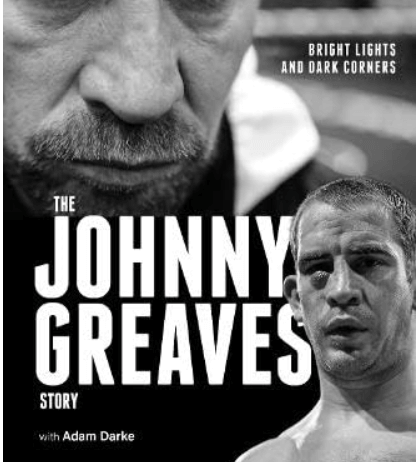
Johnny Greaves was a professional loser. He had one hundred professional fights between 2007 and 2013, lost 96 of them, scored one knockout, and was stopped short of the distance twelve times. There was no subtlety in how his role was explained to him: “Look, Johnny; professional boxing works two ways. You’re either a ticket-seller and make money for the promoter, in which case you get to win fights. If you don’t sell tickets but can look after yourself a bit, you become an opponent and you fight to lose.”
By losing, he could make upwards of one thousand pounds for a night‘s work.
Greaves grew up with an alcoholic father who beat his children and wife. Johnny learned how to survive the beatings, which is what his career as a fighter would become. He was a scared, angry, often violent child who was expelled from school and found solace in alcohol and drugs.
The fighters Greaves lost to in the pros ran the gamut from inept local favorites to future champions Liam Walsh, Anthony Crolla, Lee Selby, Gavin Rees, and Jack Catterall. Alcohol and drugs remained constants in his life. He fought after drinking, smoking weed, and snorting cocaine on the night before – and sometimes on the day of – a fight. On multiple occasions, he came close to committing suicide. His goal in boxing ultimately became to have one hundred professional fights.
On rare occasions, two professional losers – “journeymen,” they’re called in The UK – are matched against each other. That was how Greaves got three of the four wins on his ledger. On September 29, 2013, he fought the one hundredth and final fight of his career against Dan Carr in London’s famed York Hall. Carr had a 2-42-2 ring record and would finish his career with three wins in ninety outings. Greaves-Carr was a fight that Johnny could win. He emerged triumphant on a four-round decision.
The Johnny Greaves Story, told by Greaves with the help of Adam Darke (Pitch Publishing) tells the whole sordid tale. Some of Greaves’s thoughts follow:
* “We all knew why we were there, and it wasn’t to win. The home fighters were the guys who had sold all the tickets and were deemed to have some talent. We were the scum. We knew our role. Give some young prospect a bit of a workout, keep out of the way of any big shots, lose on points but take home a wedge of cash, and fight again next week.”
* “If you fought too hard and won, then you wouldn’t get booked for any more shows. If you swung for the trees and got cut or knocked out, then you couldn’t fight for another 28 days. So what were you supposed to do? The answer was to LOOK like you were trying to win but be clever in the process. Slip and move, feint, throw little shots that were rangefinders, hold on, waste time. There was an art to this game, and I was quickly learning what a cynical business it was.”
* “The unknown for the journeyman was always how good your opponent might be. He could be a future world champion. Or he might be some hyped-up nightclub bouncer with a big following who was making lots of money for the promoter.”
* “No matter how well I fought, I wasn’t going to be getting any decisions. These fights weren’t scored fairly. The referees and judges understood who the paymasters were and they played the game. What was the point of having a go and being the best version of you if nobody was going to recognize or reward it?”
* “When I first stepped into the professional arena, I believed I was tough. believed that nobody could stop me. But fight by fight, those ideas were being challenged and broken down. Once you know that you can be hurt, dropped and knocked out, you’re never quite the same fighter.”
* “I had started off with a dream, an idea of what boxing was and what it would do for me. It was going to be a place where I could prove my toughness. A place that I could escape to and be someone else for a while. For a while, boxing was that place. But it wore me down to the point that I stopped caring. I’d grown sick and tired of it all. I wished that I could feel pride at what I’d achieved. But most of the time, I just felt like a loser.”
* “The fights were getting much more difficult, the damage to my body and my psyche taking longer and longer to repair after each defeat. I was putting myself in more and more danger with each passing fight. I was getting hurt more often and stopped more regularly. Even with the 28-day [suspensions], I didn’t have time to heal. I was staggering from one fight to the next and picking up more injuries along the way.”
* “I was losing my toughness and resilience. When that’s all you’ve ever had, it’s a hard thing to accept. Drink and drugs had always been present in my life. But now they became a regular part of my pre-fight preparation. It helped to shut out the fear and quieted the thoughts and worries that I shouldn’t be doing this anymore.”
* “My body was broken. My hands were constantly sore with blisters and cuts. I had early arthritis in my hip and my teeth were a mess. I looked an absolute state and inside I felt worse. But I couldn’t stop fighting yet. Not before the 100.”
* “I had abused myself time after time and stood in front of better men, taking a beating when I could have been sensible and covered up. At the start, I was rarely dropped or stopped. Now it was becoming a regular part of the game. Most of the guys I was facing were a lot better than me. This was mainly about survival.”
* “Was my brain f***ed from taking too many punches? I knew it was, to be honest. I could feel my speech changing and memory going. I was mentally unwell and shouldn’t have been fighting but the promoters didn’t care. Johnny Greaves was still a good booking. Maybe an even better one now that he might get knocked out.”
* “Nobody gave a f*** about me and whether I lived or died. I didn’t care about that much either. But the thought of being humiliated, knocked out in front of all those people; that was worse than the thought of dying. The idea of being exposed for what I was – a nobody.”
* “I was a miserable bastard in real life. A depressive downbeat mouthy little f***er. Everything I’ve done has been to mask the feeling that I’m worthless. That I have no value. The drinks and the drugs just helped me to forget that for a while. I still frighten myself a lot. My thoughts scare me. Do I really want to be here for the next thirty or forty years? I don’t know. If suicide wasn’t so impactful on people around you, I would have taken that leap. I don’t enjoy life and never have.”
So . . . Any questions?
****
Steve Albert was Showtime’s blow-by-blow commentator for two decades. But his reach extended far beyond boxing.
Albert’s sojourn through professional sports began in high school when he was a ball boy for the New York Knicks. Over the years, he was behind the microphone for more than a dozen teams in eleven leagues including four NBA franchises.
Putting the length of that trajectory in perspective . . . As a ballboy, Steve handed bottles of water and towels to a Knicks back-up forward named Phil Jackson. Later, they worked together as commentators for the New Jersey Nets. Then Steve provided the soundtrack for some of Jackson’s triumphs when he won eleven NBA championships as head coach of the Chicago Bulls and Los Angeles Lakers.
It’s also a matter of record that Steve’s oldest brother, Marv, was arguably the greatest play-by-play announcer in NBA history. And brother Al enjoyed a successful career behind the microphone after playing professional hockey.
Now Steve has written a memoir titled A Funny Thing Happened on the Way to the Broadcast Booth. Those who know him know that Steve doesn’t like to say bad things about people. And he doesn’t here. Nor does he delve into the inner workings of sports media or the sports dream machine. The book is largely a collection of lighthearted personal recollections, although there are times when the gravity of boxing forces reflection.
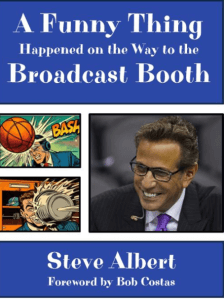
“Fighters were unlike any other professional athletes I had ever encountered,” Albert writes. “Many were products of incomprehensible backgrounds, fiercely tough neighborhoods, ghettos and, in some cases, jungles. Some got into the sport because they were bullied as children. For others, boxing was a means of survival. In many cases, it was an escape from a way of life that most people couldn’t even fathom.”
At one point, Steve recounts a ringside ritual that he followed when he was behind the microphone for Showtime Boxing: “I would precisely line up my trio of beverages – coffee, water, soda – on the far edge of the table closest to the ring apron. Perhaps the best advice I ever received from Ferdie [broadcast partner Ferdie Pacheco] was early on in my blow-by-blow career – ‘Always cover your coffee at ringside with an index card unless you like your coffee with cream, sugar, and blood.’”
Writing about the prelude to the infamous Holyfield-Tyson “bite fight,” Albert recalls, “I remember thinking that Tyson was going to do something unusual that night. I had this sinking feeling in my gut that he was going to pull something exceedingly out of the ordinary. His grousing about Holyfield’s head butts in the first fight added to my concern. [But] nobody could have foreseen what actually happened. Had I opened that broadcast with, ‘Folks, tonight I predict that Mike Tyson will bite off a chunk of Evander Holyfield’s ear,’ some fellas in white coats might have approached me and said, ‘Uh, Steve, could you come with us.'”
And then there’s my favorite line in the book: “I once asked a fighter if he was happily married,” Albert recounts. “He said, ‘Yes, but my wife’s not.'”
“All I ever wanted was to be a sportscaster,” Albert says in closing. “I didn’t always get it right, but I tried to do my job with honesty and integrity. For forty-five years, calling games was my life. I think it all worked out.”
Thomas Hauser’s email address is thomashauserwriter@gmail.com. His next book – The Most Honest Sport: Two More Years Inside Boxing – will be published this month and is available for preorder at:
https://www.amazon.com/Most-Honest-Sport-Inside-Boxing/dp/1955836329
In 2019, Hauser was selected for boxing’s highest honor – induction into the International Boxing Hall of Fame.
To comment on this story in the Fight Forum CLICK HERE
Featured Articles
Argentina’s Fernando Martinez Wins His Rematch with Kazuto Ioka
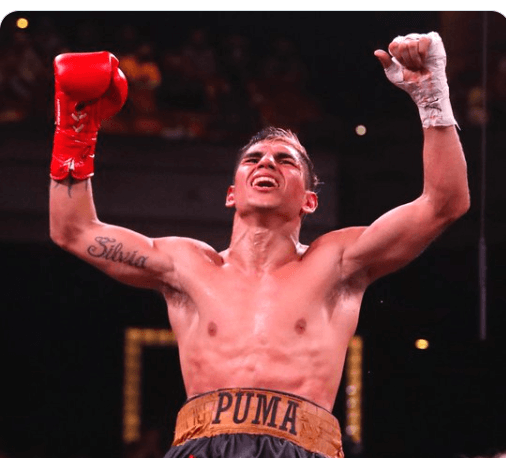
In an excellent fight climaxed by a furious 12th round, Argentina’s Fernando Daniel Martinez came off the deck to win his rematch with Kazuto Ioka and retain his piece of the world 115-pound title. The match was staged at Ioka’s familiar stomping grounds, the Ota-City General Gymnasium in Tokyo.
In their first meeting on July 7 of last year in Tokyo, Martinez was returned the winner on scores of 117-111, 116-112, and a bizarre 120-108. The rematch was slated for late December, but Martinez took ill a few hours before the weigh-in and the bout was postponed.
The 33-year-old Martinez, who came in sporting a 17-0 (9) record, was a 7-2 favorite to win the sequel, but there were plenty of reasons to favor Ioka, 36, aside from his home field advantage. The first Japanese male fighter to win world titles in four weight classes, Ioka was 3-0 in rematches and his long-time trainer Ismael Salas was on a nice roll. Salas was 2-0 last weekend in Times Square, having handled upset-maker Rolly Romero and Reito Tsutsumi who was making his pro debut.
But the fourth time was not a charm for Ioka (31-4-1) who seemingly pulled the fight out of the fire in round 10 when he pitched the Argentine to the canvas with a pair of left hooks, but then wasn’t able to capitalize on the momentum swing.
Martinez set a fast pace and had Ioka fighting off his back foot for much of the fight. Beginning in round seven, Martinez looked fatigued, but the Argentine was conserving his energy for the championship rounds. In the end, he won the bout on all three cards: 114-113, 116-112, 117-110.
Up next for Fernando Martinez may be a date with fellow unbeaten Jesse “Bam” Rodriguez, the lineal champion at 115. San Antonio’s Rodriguez is a huge favorite to keep his title when he defends against South Africa’s obscure Phumelela Cafu on July 19 in Frisco, Texas.
As for Ioka, had he won today’s rematch, that may have gotten him over the hump in so far as making it into the International Boxing Hall of Fame. True, winning titles in four weight classes is no great shakes when the bookends are only 10 pounds apart, but Ioka is still a worthy candidate.
To comment on this story in the Fight Forum CLICK HERE
Featured Articles
Emanuel Navarrete Survives a Bloody Battle with Charly Suarez in San Diego
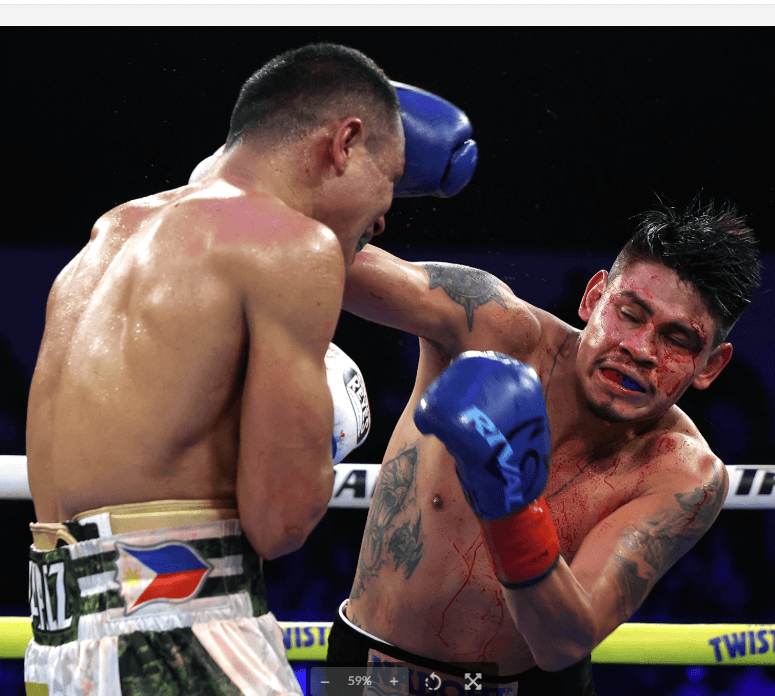
In a torrid battle Mexico’s Emanuel “Vaquero” Navarrete and his staccato attack staved off the herky-jerky non-stop assaults of Philippine’s Charly Suarez to win by technical decision and retain the WBO super feather world title on Saturday.
What do they feed these guys?
Navarrete (40-2-1, 32 KOs) and his elongated arms managed to connect enough to compensate against the surprising Suarez (18-1, 10 KOs) who wowed the crowd at Pechanga Arena in San Diego.
An accidental clash of heads opened a cut on the side of Navarrete’s left eye and forced a stoppage midway through the fight.
From the opening round Navarrete used his windmill style of attack with punches from different angles that caught Suarez multiple times early. It did not matter. Suarez fired back with impunity and was just as hungry to punch it out with the Mexican fighter.
It was savage.
Every time Navarrete connected solidly, he seemed to pause and check out the damage. Bad idea. Suarez would immediately counter with bombs of his own and surprise the champion with his resilience and tenacity.
Wherever they found Suarez they should look for more, because the Filipino fighter from Manila was ferocious and never out of his depth.
Around the sixth round the Mexican fighter seemed a little drained and puzzled at the tireless attacks coming from Suarez. During an exchange of blows a cut opened up on Navarrete and it was ruled an accidental clash of heads by the referee. Blood streamed down the side of Navarrete’s face and it was cleared by the ringside physician.
But at the opening of the eighth round, the fight was stopped and the ringside physician ruled the cut was too bad to continue. The California State Athletic Commission looked at tape of the round when the cut opened to decipher if it was an accidental butt or a punch that caused the cut. It was unclear so the referee’s call of accidental clash of heads stood as the final ruling.
Score cards from the judges saw Navarrete the winner by scores of 78-75, 77-76 twice. He retains the WBO title.
Interim IBF Lightweight Title
The sharp-shooting Raymond “Danger” Muratalla (23-0, 17 KOs) maneuvered past Russia’s Zaur Abdullaev (20-2, 12 KOs) by unanimous decision to win the interim IBF lightweight title after 12 rounds.
Both fighters were strategic in their approach with Muratalla switching from orthodox to southpaw at various times of the fight. Neither fighter was ever able to dominant any round.
Defense proved the difference between the two lightweights. Muratalla was able to slip more blows than Abdullaev and that proved the difference. The fighter from Fontana, California was able to pierce Abdullaev’s guard more often than not, especially with counter punches.
Abdullaev was never out of the fight. The Russian fighter was able to change tactics and counter the counters midway through the fight. It proved effective especially to the body. But it was not enough to offset Muratalla’s accuracy.
There were no knockdowns and after 12 rounds the judges scored it 118-110, 119-109 twice for Muratalla who now becomes the mandatory for the IBF lightweight title should Vasyl Lomachenko return to defend it.
Muratalla was brief.
“He was a tough fighter,” said Muratalla. “My defense is something I work on a lot.”
Perla Wins
Super flyweight Perla Bazaldua (2-0) eased past Mona Ward (0-2) with a polished display of fighting at length and inside.
Combination punching and defense allowed Bazaldua to punch in-between Ward’s attacks and force the St. Louis fighter to clinch repeatedly. But Ward hung in there despite taking a lot of blows. After four rounds the Los Angeles-based Bazaldua was scored the winner 40-36 on all three cards. Bazaldua signed a long term contract with Top Rank in March.
Photo credit: Mikey Williams / Top Rank
To comment on this story in the Fight Forum CLICK HERE
-
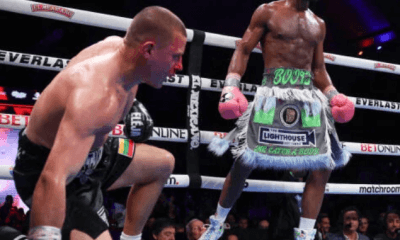
 Featured Articles4 weeks ago
Featured Articles4 weeks agoJaron ‘Boots’ Ennis Wins Welterweight Showdown in Atlantic City
-
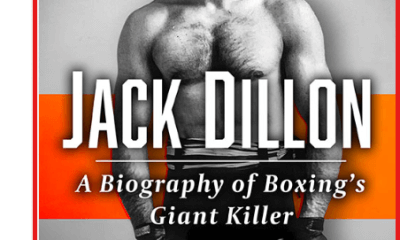
 Featured Articles4 weeks ago
Featured Articles4 weeks agoBoxing Notes and Nuggets from Thomas Hauser
-
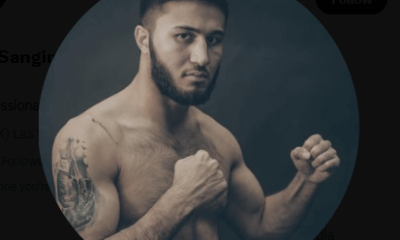
 Featured Articles4 weeks ago
Featured Articles4 weeks agoMekhrubon Sanginov, whose Heroism Nearly Proved Fatal, Returns on Saturday
-
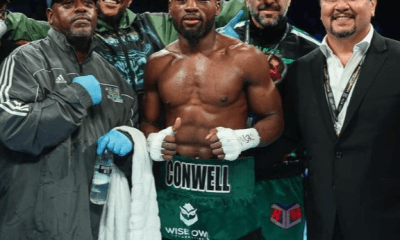
 Featured Articles3 weeks ago
Featured Articles3 weeks agoAvila Perspective, Chap. 322: Super Welterweight Week in SoCal
-
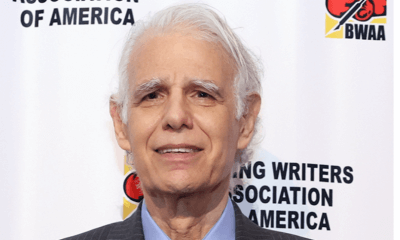
 Featured Articles4 weeks ago
Featured Articles4 weeks agoTSS Salutes Thomas Hauser and his Bernie Award Cohorts
-
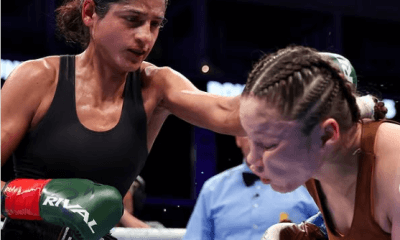
 Featured Articles3 weeks ago
Featured Articles3 weeks agoGabriela Fundora KOs Marilyn Badillo and Perez Upsets Conwell in Oceanside
-
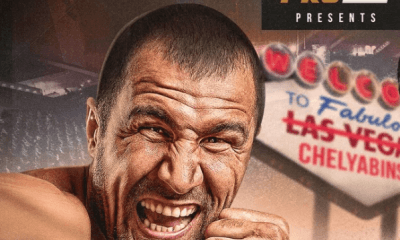
 Featured Articles3 weeks ago
Featured Articles3 weeks ago‘Krusher’ Kovalev Exits on a Winning Note: TKOs Artur Mann in his ‘Farewell Fight’
-

 Featured Articles3 weeks ago
Featured Articles3 weeks agoFloyd Mayweather has Another Phenom and his name is Curmel Moton

















